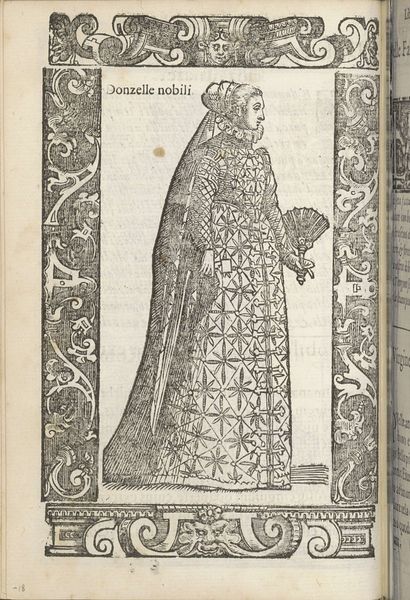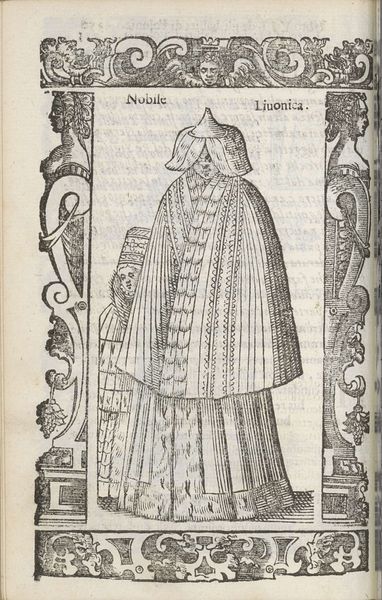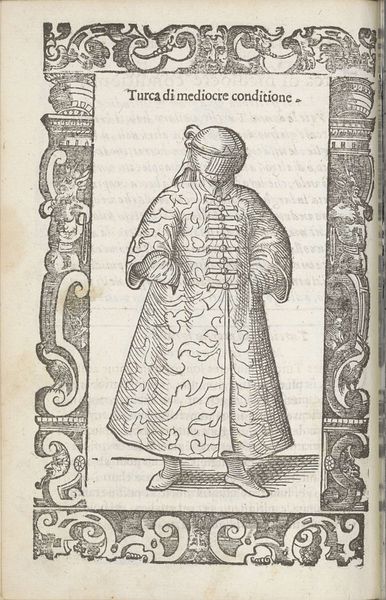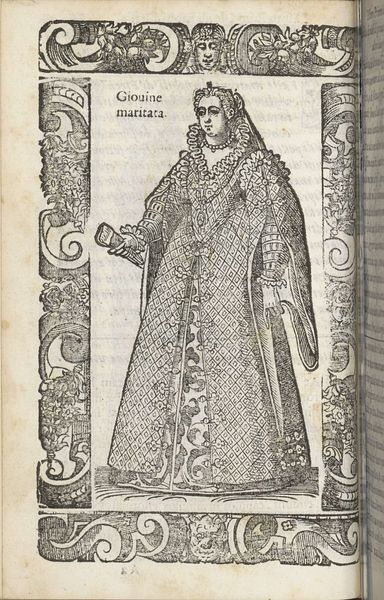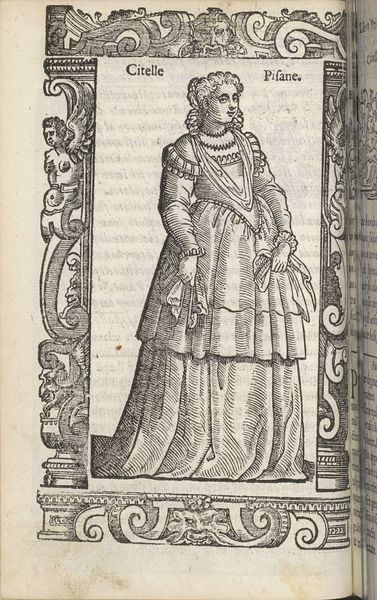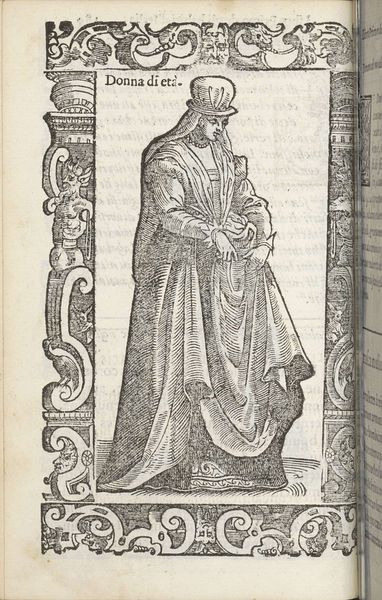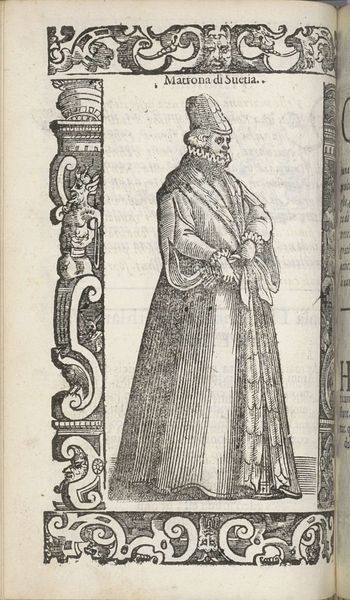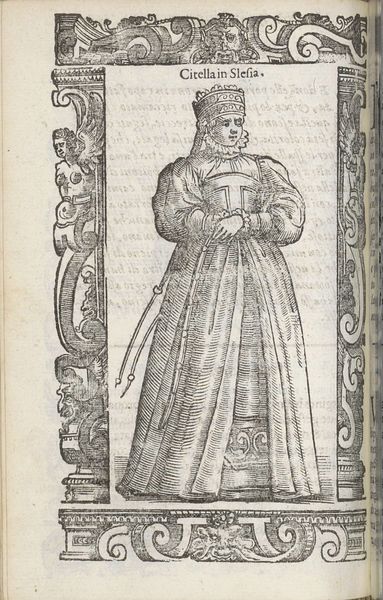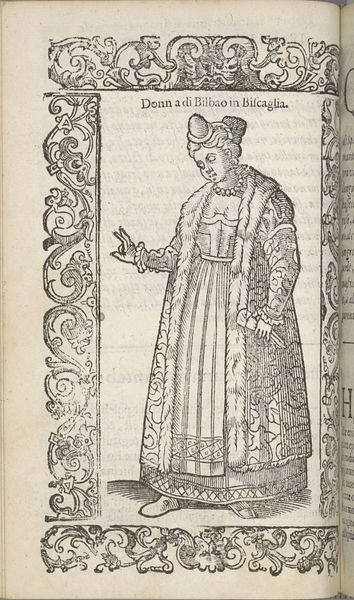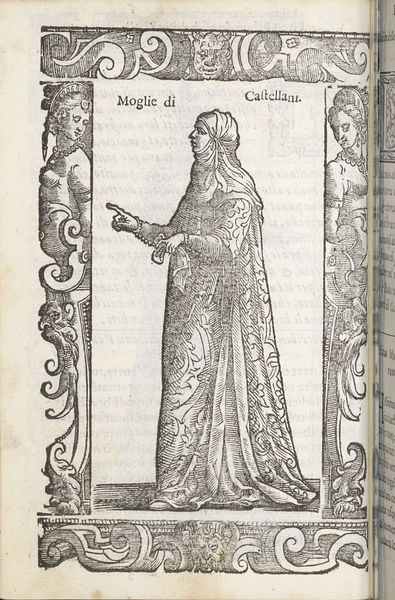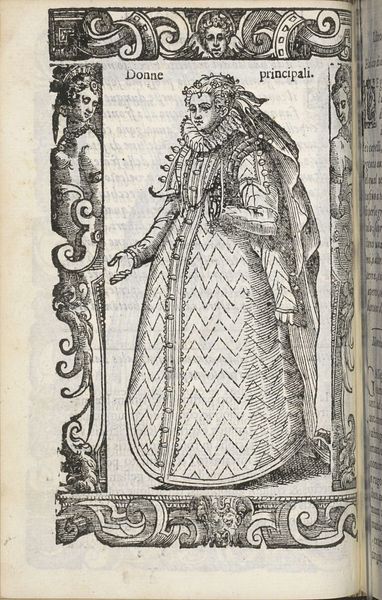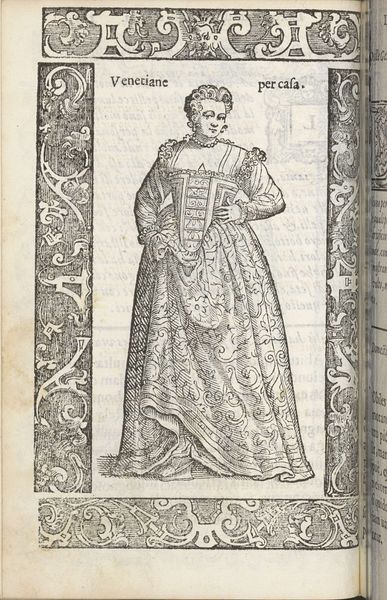
drawing, pen, engraving
#
portrait
#
drawing
#
aged paper
#
toned paper
#
old engraving style
#
sketch book
#
personal sketchbook
#
pen-ink sketch
#
pen and pencil
#
pen work
#
sketchbook drawing
#
pen
#
italian-renaissance
#
sketchbook art
#
engraving
Dimensions: height 167 mm, width 125 mm
Copyright: Rijks Museum: Open Domain
Curator: The solemnity! The attire—it overwhelms the figure! Editor: Yes, Christoph Krieger's 1598 engraving, titled "Matrone nobili," offers such a fascinating glimpse into the attire and status symbols of noblewomen during the Italian Renaissance. It’s currently housed within the pages of an open book, viewable from here. Curator: Note the way the pen work describes volume and texture! It almost appears tactile; one can nearly feel the fabrics depicted in those tightly rendered lines. The aged, toned paper adds a nice, almost velvety layer that enhances this haptic dimension of it. I bet her gown required so many hours of meticulous needlework! Editor: And her bearing certainly speaks to her position in society. Observe how the frame of the engraving almost mimics a proscenium arch, framing her as a player on a stage. These images functioned not merely as portraits, but also as proclamations, setting a template of moral and material achievement. Consider also, how these representations were part of shaping collective social memory and behavior of these “Matrone Nobili”. Curator: Absolutely. It speaks volumes about the social importance placed on visible displays of wealth and piety. I wonder, how readily could women acquire the materials and skills necessary to achieve this prescribed sartorial splendor? Who taught them how to fashion the exquisite details embellishing such elaborate clothing, how were such materials acquired? Editor: The engraver and printmaker had to be equally savvy regarding the contemporary tastes to circulate and create imagery of such influence. Also, where was this image shown, where it may have had meaning, beyond its mere function as visual display? Did they democratize such images across gender, class or education divides? It may have shaped perceptions and promoted dialogue about who or what they wanted to become. Curator: That’s interesting! You remind me to look closely at the labor necessary in producing art like this; to examine all aspects in the making of material, including where did the paper come from, the ink, and what kind of workshop might have been used. And I have a question regarding what processes might it take to replicate something such as needle work? Editor: Questions which further help understand the impact art holds in people's life! The social environment, I think, provides crucial frameworks. Curator: Exactly. It really highlights the complex material and intellectual labor required for even a seemingly simple pen and ink drawing such as this one. Editor: A truly elegant illustration of both the visual language and social history, isn't it?
Comments
No comments
Be the first to comment and join the conversation on the ultimate creative platform.
